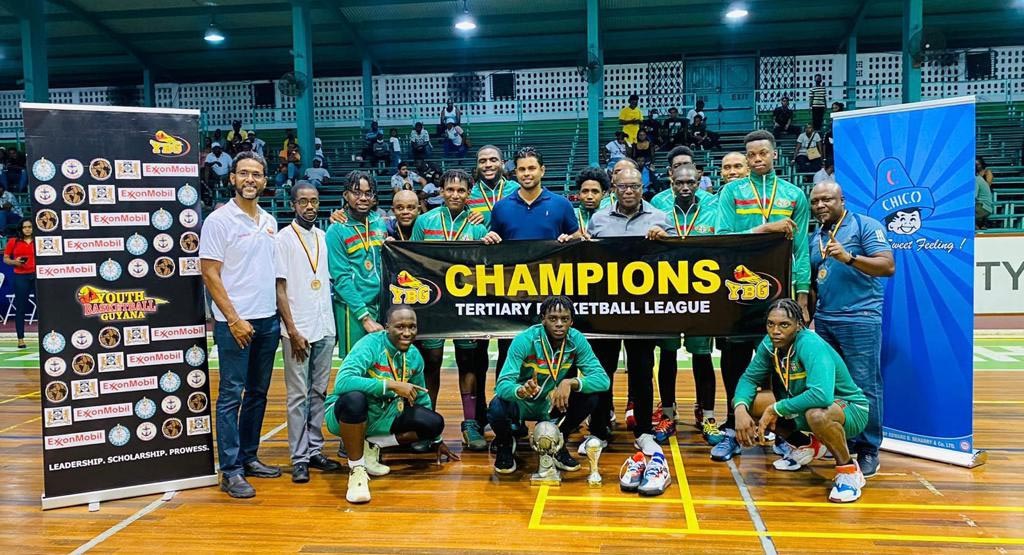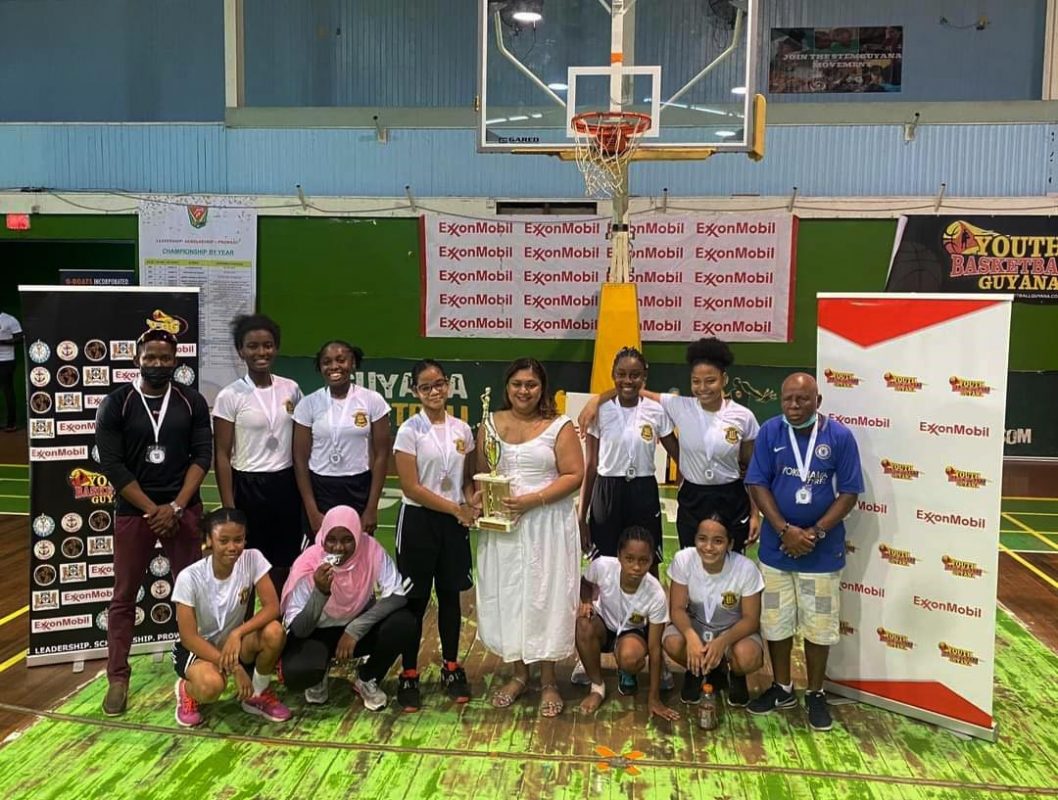Youth Basketball Guyana (YBG) Co-Director Chris Bowman, sat down with Stabroek Sport to discuss the major objectives of the organization for 2023, and to highlight the notable accomplishments of the previous year, as well as the challenges and possible solutions faced by the discipline.
Below features the entirety of the interview.
(1) What are the objectives for the entity in 2023?
“We plan to continue to build on the success of the last year, so much of the calendar will be the same. What will be a bit different given the unavailability of the Sports Hall, we’ll have more of our programmes being organised outdoors and decentralized. It will be a challenge given that there aren’t that many options in terms of adequate facilities for basketball, and also we’ll most likely have to contend with the weather.
“This year we would also like to engage head teachers and school boards on the strengthening of school teams and developing better institutional support for their programmes. We also want to ensure that our academy is maintained and kids of all ages have access to safe developmental active spaces. We are also looking for opportunities to expose more of our elite prospects so we are working toward a tour this summer.
“Of course, all of this will depend on the funding we can secure. Unfortunately, last year we fell short of our financial goal and were left with a deficit. So we’ll be working hard to secure additional sponsors and partners to support youth basketball development.”
(2). How would you describe 2022 from a developmental standpoint for YBG, and what were some of the major advancements that the body is proud of?
“Well, despite the many challenges, we are extremely proud of the way we have navigated the past three years understanding that development doesn’t happen in isolation, it is all connected, and coming off of a two years pause due to the pandemic, then to have had a year in which we had the first-ever Tertiary Basketball League and later a Tertiary knockout on top of that, is a tremendous effort. We also celebrated the 15th anniversary of the National Schools Basketball Festival, proving our longevity, another great accomplishment. In addition, we hosted the first Student-Athlete Pathway Conference, another highlight.
“But we do not consider any year success without being able to maintain a year-round academy (nursery). That’s how we measure development, based on the number of new kids getting involved in basketball and overall player development, and this can only happen through access to year-round coaching, training, and competition, and the academy facilitates this process.”
(3). What more is required, financial or otherwise, for the YBG to continue its developmental thrust?
“Many different components have to work in tandem for the game of basketball to develop and be sustained. The biggest need for our sport is access to adequate facilities consistently. For example, our academy (nursery) gets one day per week to train at the Sports Hall, on Saturdays from 12 pm to 5 pm. During this time we cater to four developmental categories of players: Starting with beginners 4-11 years old who train from (12-1 pm), Girls 13-18 from (1 – 2 pm) Intermediate Coed (2-3 pm), and Special Select Advance (3-5 pm). Already you can see the time is not enough, but we try to make it work. The problem is these kids are regularly displaced for some other activity that could have been scheduled around this set time. At times this is for as many as four consecutive weeks where we are unable to have any training take place.
“Now let’s put this into context, a parent wants to get their four-year-old son or 11-year-old daughter who just started secondary school to start basketball. Ninety percent of the time they will join YBG, and then they’ll start very excited, and just before the next week’s session they receive correspondence that says; we apologize but there isn’t going to be any practice today because the facility is not available and after three weeks we are back on for another two weeks and the cycle of disruption continues, we apologize, we apologize, we apologize. It is hard to maintain enthusiasm and sustain development under those circumstances. I know it is a long answer but these kids and parents must know the reality of the challenges we face in basketball.
“Another challenge is sponsorship, especially from big businesses. It is our longstanding sponsor Edward B. Beharry Ltd, and in the last couple of years; ExxonMobil GY, G-Boat Guyana, and California to Guyana Basketball Foundation, who have mostly funded our programmes. Unfortunately, big businesses like beverage giants, telecommunication, commercial banks, and fast food just to name a few haven’t done much for basketball at this level. Maybe they don’t see much value in youth sports but we hope this can change soon because it is a game that has broad appeal and add great value to the community. And I am sure many of our esteemed business leaders watch and enjoy the NBA.”
(4) Given the current climate of basketball locally, what more needs to be done to improve the standard of the game, especially at the club level, given that YBG continues to be a beacon of advancement at the school and youth levels?
“There is a need for greater equity across sports disciplines, not just basketball. But specifically to basketball, which is one of the major grassroots team sports across the globe. Locally, it has to be treated with the same regard both by internal and external stakeholders. For instance, basketball doesn’t have a single court anywhere in the country that can adequately facilitate training, development and competition at an elite level, or even a basic level. Think about the adverse impact this has on the growth and development of the game locally.
“And even when the Cliff Anderson Sports Hall is accessible, basketball is given a backseat to every other discipline. But whose fault is this; first, the administrators who have been elected to represent the game have done a poor job of it. Quite frankly the game of basketball lacks proper representation, it is half-hearted and lacks vision and passion. But it is also the fault of those who are responsible for developing sports in general. I am not sure they care and maybe they don’t even understand how much their actions or inactions are affecting youths across this country who love the game and have personal aspirations. In addition, the process of sports development appears to be random, selective, and disjointed and at times you don’t know who is in charge of doing what. However, the solution from a basketball standpoint is to elect better representatives who then would need to create a new financial and operational model for the game. Basketball needs investment and restructuring, but before that, the game needs competent and committed advocates.
“YBG is concerned about what happens to the hundreds of youths that play basketball at the youth level after they would have graduated from high school. Is there no real hope for them? Aren’t their dreams and aspirations to be taken seriously? But even with the extraordinary work that we are doing, it can be likened to drawing a line in the sand on the seashore, because many of these student-athletes graduate from high school and soon after that they lose the motivation. There is nothing meaningful after that to transition to.”









